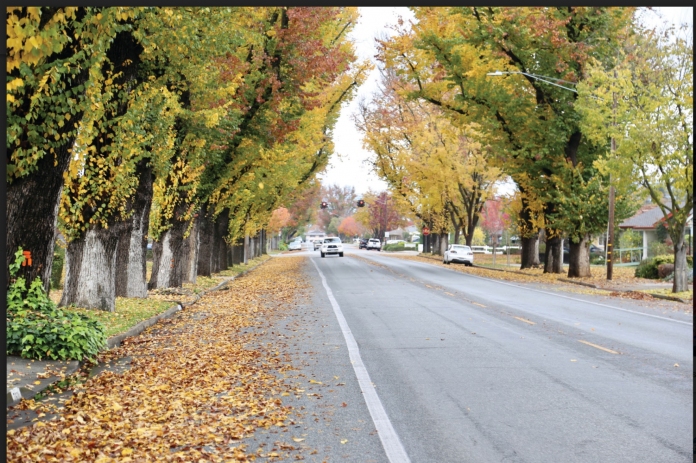Where are the trees?
When you drive down Gilroy’s two main entrances off Highway 101, you get the feeling you are in Detroit or some midwestern factory town, not an area known for its agriculture and plant life.
You see strip malls and fast food joints on Leavesley Road and 10th Street, but nothing that tells you that, hey, we are driving toward a quaint, authentic and historical downtown. Leavesley has some signs heading you out to Highway 152, not welcoming you here. And where are the aesthetics?
That’s one of the big questions that came up at the Gilroy Dispatch’s first Editorial Board meeting. We live in a city that seems like no one cares about how it looks. It seems to be in perpetual fixer-upper condition. We’ll make it nice when the work is done, which is apparently, never.
The latest tree broohaha is even more telling. The city was set to cut down hundreds of trees, which its contractor claimed were unhealthy. But further looks are showing that they are fine. They just need some TLC and some tolerance of natural conditions.
Some people complained about beetles in the stately and beautiful trees on Miller Avenue and other places, but a deeper check with naturalists shows that the beetles are natural. They strip the leaves in the fall and allow them to grow back in the spring, without harming the trees.
According to a lawsuit filed against the city by a Wonder Woman of a resident, Camille McCormack, Gilroy contracted with a tree removal service and was going to spend a quarter of a million dollars cutting trees–but didn’t get a fair assessment of the health of the trees. Nor did the city council require the replacement of trees it cut down.
Luckily, with publicity, residents are waking up to the stripping of the shade. They are beginning to hold the city accountable for a move that in the past might have been simply rubber-stamped by the council, after the public works department makes a recommendation.
The process has really woken us up to the importance of having someone review the city staff recommendations. That’s what a city council is supposed to do. We see this kind of negligence on a national scale all the time–that’s why congress has a lower approval rating than venereal disease–but we expect more from our local representatives. They live here and should want the city to be beautiful as well.
We hate constant comparisons to Morgan Hill, but get off the freeway at its two main exits and yes, you see strip malls, but you also see tree-lined streets leading all the way to its newly spruced up downtown. There’s no reason Gilroy can’t do the same.
Miller Avenue is a great example of how beautiful Gilroy can be. So are the numbered streets around Miller and tree-lined Monterey Street. They are shady and lush and frankly more appealing as older neighborhoods than some new, fancier but treeless housing developments.
Developer Gary Walton cited a study showing that cities with a lush urban forest are stronger economically than those without trees. It makes sense. A city that cares about the small details, like the aesthetics of preserving its trees will also do a better job on bigger projects.
Walton also points out that trees break through concrete sidewalks and require maintenance, but he adds that asphalt streets that are protected by shade last longer. (Hello, First Street.)
With the heat we have been having a thriving urban tree canopy is needed more than ever. Gilroy can get hot and if the trend is to get hotter, our tree canopy is going to be more important than ever.















